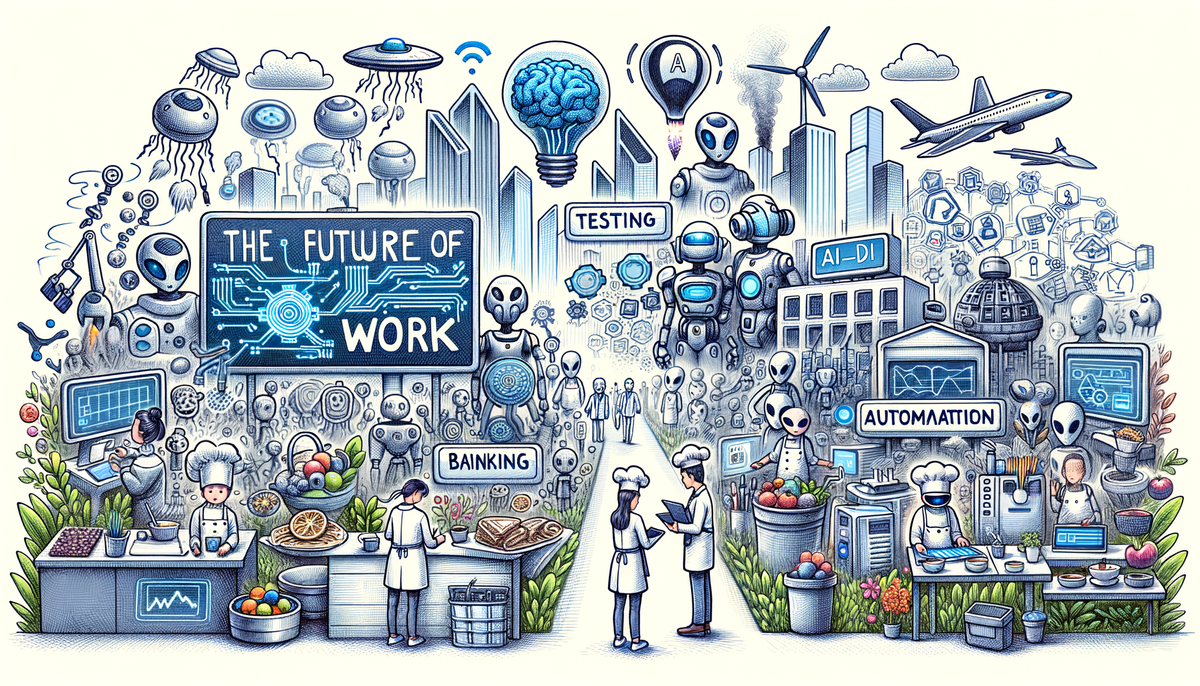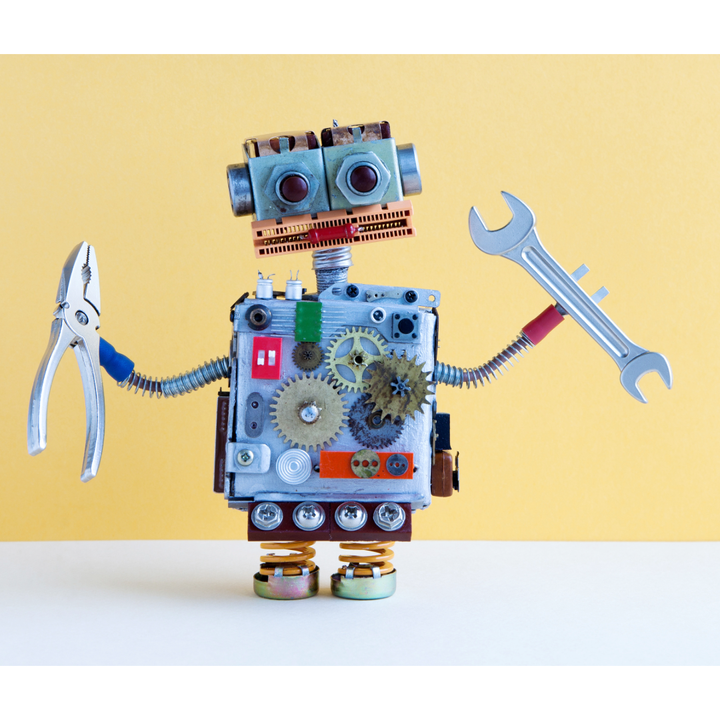Nvidia's Acquisition of Lepton AI: A Strategic Leap in AI Dominance

This article delves into the multifaceted impact of artificial intelligence across industries—from transformative AI testing infrastructures and creative culinary applications to strategic acquisitions in the AI semiconductor space, ethical debates in immigration enforcement, shifts in the job market, and innovative solutions in the banking and consumer tech sectors. By examining recent initiatives like Ceramic.ai’s breakthrough in AI model training, the practical yet imperfect applications of AI in recipe generation, Nvidia’s potential acquisition of Lepton AI, evolving surveillance in immigration, and breakthrough partnerships in dispute resolution and wearable intelligence, we reveal how AI is shaping our future while continuously inviting critical discussions on efficiency, ethics, and human collaboration.
Revolutionizing AI Infrastructure: The Ceramic.ai Initiative
Anna Patterson’s transition from a leading figure at Google’s AI fund to spearheading Ceramic.ai marks a pivotal moment in addressing the longstanding inefficiencies in AI infrastructure. Her new venture is a direct response to bottlenecks experienced by smaller enterprises when competing against tech giants, especially in the realm of high-performance model training. Traditional AI ecosystems usually fall short on two fronts: the impressive scaling of large language models and the astronomical cost of GPUs—some models reaching prices upwards of $25,000. Ceramic.ai is designed to challenge this narrative by accelerating training speeds on powerful H100 GPUs by a factor of 2.5 and offering a capacity that can handle an extensive context limit of up to 96,000 words.
This ambitious approach signals a broader paradigm shift. As one considers the impact of democratized access to cutting-edge AI, it becomes clear that by enhancing both efficiency and affordability, Ceramic.ai is not merely introducing an incremental improvement but rather redefining the foundation upon which future AI solutions will be built. The fact that the venture has already attracted $12 million in seed funding—with industry heavyweights like IBM and Samsung among its backers—underscores both the promise and the relevance of addressing these infrastructural shortcomings.
In many ways, Patterson’s journey echoes a broader entrepreneurial spirit in technology: identifying a systemic weakness and crafting a solution that benefits a diverse spectrum of stakeholders. As noted by technology visionaries, "The future of artificial intelligence is bright, but we must balance the potential with ethical considerations to ensure it serves humanity and not the other way around." This sentiment by Bill Gates encapsulates the ambition behind Ceramic.ai—not to replace conventional methodologies but to enhance them, ensuring smaller players can innovate without the burden of prohibitive costs.
For those interested in diving deeper into market dynamics and innovation trends, our earlier coverage on governance and cybersecurity in the AI space offers complementary insights into how infrastructure plays a critical role in shaping overall industry performance.
When Machines Meet the Kitchen: The AI Recipe Generator Experiment
Artificial intelligence is not confined to the walls of data centers and corporate boardrooms—it is also finding its way to our kitchens. Picture this: a high-tech app that transforms snapshots of delectable dishes into comprehensive cooking guides. SideChef’s RecipeGen promises to bridge the gap between restaurant-quality meals and home preparation, appealing to both culinary connoisseurs and novices alike.
However, real-world experiments reveal that the translation from image to recipe is not yet flawless. Amanda Smith, a self-proclaimed foodie, recounts her experience with the app: a snapshot of an artfully plated brunch dish resulted in an incomplete recipe that omitted vital ingredients like ricotta cheese and strawberry butter—elements that are essential to recreate the intended flavor profile. On the flip side, when applied to a familiar dish like sweet potato gnocchi, the AI managed to capture most core components, albeit with an overly convoluted preparation method that deviated from traditional practices.
This interplay of success and missteps serves as a reminder that AI, while powerful, often requires human intuition to fine-tune its outputs in nuanced fields such as haute cuisine. Much like a sous-chef who supports a head chef’s vision, AI in this domain acts as an assistant rather than a replacement. The technology shows remarkable promise in generating inspiration for innovative ingredient pairings and basic recipe construction, yet it still lags behind when it comes to capturing the culinary subtleties that form the magic behind every cherished dish.
From a wider perspective, the challenges encountered by AI in the kitchen mirror issues seen in other industries—where algorithms may oversimplify complex scenarios. This calls for a synergistic approach that fuses machine efficiency with human expertise. A quote that often resonates in such discussions comes from Elon Musk, who once observed, "We are not trying to replace humans, but to make human work easier, faster, and more productive." In this case, tweaking algorithmic interpretation in culinary tasks could eventually lead to models that better balance simplicity with precision.
For those curious about how AI impacts various sectors differently, our ongoing analysis of innovative applications in digital transformation at AI market dynamics offers additional context on these evolving trends.
Strategic Acquisitions: Nvidia's Pursuit of AI Dominance
Nvidia has become a household name not only because of its prowess in graphics and computing but also due to its aggressive expansion into the realm of artificial intelligence. Recent discussions surrounding its potential acquisition of Lepton AI highlight Nvidia's strategy to fortify its competitive edge. Lepton AI, which specializes in renting out computing power using Nvidia’s proprietary AI chips, stands out as a natural complement to Nvidia’s broader ambitions in cloud services and machine learning.
This potential acquisition, valued at several hundred million dollars, is emblematic of a broader industry trend where established tech giants are strategically incorporating innovative startups into their operations. By doing so, companies like Nvidia can effectively integrate emerging technologies that enhance data processing, speed up machine learning workflows, and unlock new market opportunities. Analysts suggest that this move could contribute to setting new industry standards for efficiency, speed, and adaptability in AI-driven applications.
Moreover, this acquisition is not merely a financial transaction but a tactical enhancement that could redefine Nvidia's leadership status. It reflects an understanding that the future of AI lies in collaborative ecosystems where hardware, software, and innovative applications converge. Reflecting on this, one recalls Stephen Hawking’s perspective: "Artificial intelligence is a tool, not a replacement for human intelligence." Nvidia's targeted acquisition strategy seems to embody this philosophy by aiming to augment its human-centered innovations through enhanced machine capabilities.
For readers who are tracking the evolution of AI in the semiconductor space, our detailed report on Nvidia's role as an AI powerhouse further expands on how these strategic acquisitions are reshaping competitive landscapes and setting the stage for future technological leaps.
Ethics at the Crossroads: AI in U.S. Immigration Enforcement
The integration of AI into public systems often stirs a complex interplay between efficiency and ethical considerations. One particularly sensitive application is in U.S. immigration enforcement, where advanced surveillance and predictive analytics are employed to streamline data analysis and decision-making. Agencies are leveraging AI to process vast amounts of information from social media, public records, and biometric databases with the goal of pinpointing individuals who might pose security risks or have violated visa stipulations.
This precision is undeniably attractive from an operational standpoint, as it allows for more focused resource allocation and a theoretically more equitable enforcement process. Critics, however, warn of the potential pitfalls—particularly the risk of algorithmic bias and invasions of privacy. When AI systems misinterpret data or amplify existing social prejudices, the consequences can be profound, resulting in unwarranted detentions or discriminatory practices.
It is crucial to note that while machine learning introduces the potential for consistency and scale, it also necessitates rigorous human oversight. The balance between leveraging predictive analytics and ensuring ethical safeguards is delicate; decisions made purely by algorithms, without transparency, open the door to significant civil liberties concerns.
"We need to ensure that AI serves as a tool for justice rather than oppression," notes an expert in digital ethics. This sentiment underlines the necessity for ongoing dialogue, oversight, and legislative review as AI becomes more enmeshed with governance structures.
This spirit of cautious optimization is echoed in our earlier discussions on the intersection of technology and ethical governance in the AI landscape, as elaborated in our feature pieces on AI governance and cybersecurity. As policymakers strive to harness the benefits of AI while mitigating its risks, the conversation around surveillance and human rights remains as critical as ever.
Adapting to Change: AI, Jobs, and Future-Proof Professions
Amid the rapid advancements across various sectors, concerns about job displacement due to AI automation frequently surface. In a recent contested narrative, Bill Gates outlined that certain professions—such as coders, biologists, and energy experts—seem to remain relatively insulated from the sweeping changes driven by AI. Although the specifics of the analysis remain sparse, the underlying message is clear: human ingenuity and domain-specific expertise continue to hold a competitive edge over automation.
This observation is particularly important in an era when entire industries are being reshaped. The notion that AI might supplant wholesale labor markets has often elicited dystopian predictions. However, many experts advocate for a more balanced view. Instead of viewing AI as a replacement for human labor, it is more appropriate to see it as a collaborative force that augments human capabilities. This perspective encourages the cultivation of hybrid models where the nuance of human judgment complements the data processing power of machines.
Such reflections also resonate with the wider discourse on AI’s impact in various professional realms. By directing increased focus to education, re-skilling, and continuous learning, the workforce can harness AI’s potential without the fear of obsolescence. In this dynamic environment, professionals who combine creativity with technical expertise can find themselves at a distinct advantage in an increasingly complex marketplace.
For a broader understanding of how market trends and strategic decisions are influenced by AI, our piece on analysts rethinking stock price targets amid the AI race provides a complementary viewpoint on reassessing conventional wisdom in light of evolving technological landscapes.
Transforming Industry Operations: AI in Banking and Beyond
The transformative power of AI extends well into the realms of finance and operational management. Cognizant, in partnership with ServiceNow, has unveiled a groundbreaking dispute management solution tailored for the mid-market banking sector in North America. This AI-powered solution is designed to tackle longstanding challenges such as fragmented systems, operational inefficiencies, and regulatory pressures.
The system harnesses cutting-edge features including multi-channel dispute intake, advanced customer sentiment analysis via voice and text, and automated workflows bolstered by generative AI. By streamlining resolution processes through straight-through processing (STP) and actionable workload prediction analytics, the solution aims to dramatically reduce manual intervention while enhancing overall customer satisfaction.
This convergence of technology and financial services underscores a broader industry movement towards data-driven decision-making and automation. Early endorsements by industry leaders, including figures like Ashish Chopra, underline the potential for such innovations to not only simplify dispute resolution but also to recalibrate how banks operate in a competitive market.
The trend reflects a shift where AI is positioned as a critical enabler for operational excellence—reinforcing that technology, when applied judiciously, equips organizations to overcome entrenched challenges. Interested readers may wish to tag along with our comprehensive exploration of disruptive technological advancements in our coverage of AI's influence on market dynamics at Nvidia’s strategic positioning in a competitive landscape.
Enhancing Everyday Experiences: AI in Wearable Tech
While industrial and financial sectors are experiencing robust transformations, AI is also making significant strides in consumer technology, particularly in the realm of wearable devices. Garmin’s recent introduction of the Garmin Connect+ premium tier is an exemplary case in point. By offering a suite of AI-enhanced features—ranging from "Active Intelligence" to a comprehensive Performance Dashboard—Garmin is poised to deliver a more personalized and insightful fitness experience.
At a modest subscription fee, Connect+ enriches the base offering by delivering tailor-made insights and advanced connected capabilities that evolve based on user interactions. What’s refreshing about this move is Garmin’s commitment to keeping the fundamental free experience intact—a strategy that respects long-standing user loyalty while exploring new revenue models consistent with industry trends.
This approach emphasizes a key principle in the evolution of consumer tech: enhancing user experience without alienating the core audience. In a world that is increasingly leaning towards personalized data-driven insights, devices armed with AI capabilities can guide users to optimize their training, track performance trends, and ultimately foster a healthier lifestyle. The marriage of wearable tech and AI thus illustrates a broader trend where digital tools complement daily endeavors, making advanced insights accessible to a wide audience.
For those keen on exploring further how AI is infiltrating various aspects of our daily lives—from technological gadgets to everyday applications—our ongoing series on emerging trends in AI connectivity and user engagement provides valuable context.
Conclusion: A Complex Tapestry of Innovation, Challenges, and Opportunities
The landscape of artificial intelligence is as intricate as it is expansive. From Anna Patterson’s Ceramic.ai, addressing critical bottlenecks in AI infrastructure, to the playful yet insightful experiments in algorithmic recipe generation, the trajectory of AI innovation is riddled with both promise and profound challenges. Strategic moves such as Nvidia’s potential acquisition of Lepton AI highlight the competitive zeal capturing today’s dynamic tech environment, where consolidation of resources frequently paves the way to industry dominance.
However, the story of AI is not limited to sector-specific breakthroughs. Its influence spans into areas as diverse as immigration enforcement—where ethical and operational quandaries must be carefully balanced—with the promise of rethinking traditional dispute resolution models in banking and elevating everyday experiences through intelligent wearables.
One of the recurring themes in this digital revolution is the delicate balance between harnessing technology for efficiency and ensuring that human judgment and compassion are not obscured in the process. As the famed words by Bill Gates remind us, "The future of artificial intelligence is bright, but we must balance the potential with ethical considerations to ensure it serves humanity and not the other way around."
The interplay of collaborative dynamics between human ingenuity and machine efficiency has never been more evident. Whether one is an entrepreneur working to democratize AI capabilities, a chef experimenting with algorithmically generated recipes, a corporate strategist planning the next big acquisition, or a policymaker tasked with safeguarding civil liberties—the AI revolution offers lessons, warnings, and opportunities alike.
As we continue to witness these rapid transformations, it is essential for stakeholders across the board to adopt an integrative approach: one that not only celebrates technological prowess but also insists on mindful reflection and regulatory clarity. AI is not a monolith but a complex tapestry woven from innovation, human creativity, and ethical discernment, ensuring that the journey ahead is as inclusive as it is groundbreaking.



Comments ()